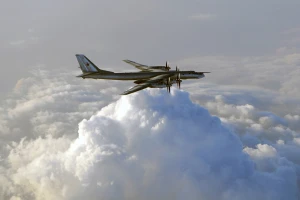
How war in Ukraine impacts Russian civilian, commercial aviation
The increasing technical challenges are linked to Western sanctions that ban the import of crucial components for aircraft maintenance
The growing number of aviation incidents across Russia is a vivid example of the war in Ukraine being brought home to Russia, The Jamestown Foundation, a Washington, D.C.-based defense policy think tank says in its article.
Analysts say that over the past month, as many as ten forced landings of civilian aircraft have taken place in Russia. The most serious of these happened last week.
On December 7, a fire on board an Aeroflot Airlines Boeing 777 forced the aircraft to make an emergency landing. The plane was flying from Kamchatka to Moscow when a passenger noticed smoke coming from under his seat. The preliminary investigation attributed the fire to a short circuit of wiring in the main cabin. That same day, a Tu-204S cargo plane of Aviastar-Tu Airlines with registration number RA-64024 was returning from Zhengzhou airport in China. After takeoff, the pilot reported to air traffic controllers that the left engine had stalled and requested an emergency landing at Ulan-Ude airport. And on December 8, a Siberian Airlines Boeing 737 traveling from Novosibirsk to Moscow made an emergency landing in Tolmachevo. Immediately after takeoff, both of the aircraft’s engines caught fire.
Since the start of the war in Ukraine, Russian civilian aviation has been targeted by Western sanctions and an acute shortage of technical expertise. US experts say that much of Russia's civilian fleet might be grounded during the next year due to a lack of personnel and necessary spare parts, management carelessness, and Moscow's fundamental shift from the regulations for repairing foreign-made aircraft.
Many of Russia's civilian aircraft have gradually broken down due to a lack of access to software upgrades and adequate technical guidance, as well as skipping normal maintenance intervals. Engines, landing gear, and brakes are frequently the first to fail.
Flaps, air conditioning and de-icing systems, and internal wiring issues are less common, but have become more frequent in recent weeks. All civilian aircraft appear to be fully serviceable on paper, thanks to Kremlin directives not to record any problems in pilots' logbooks.
Moscow's domestic aviation issues extend beyond civilian flights to the commercial sector. Russia's air freight industry is rapidly stalling due to the dominance of obsolete Soviet Ilyushin Il-76 and Ukrainian Antonov AN-24 and AN-26 cargo planes.
Russian commercial cargo airplanes have an average age of 50 years. Due to the mass transfer of foreign aircraft to Russia prior to the war; the lack of economic feasibility in completing such an overhaul, and the inability to gain access to necessary parts to upgrade Ukrainian cargo planes, these aircraft have not been properly upgraded and maintained.
Similar issues exist in helicopter aviation. The primary obstacle is the slow production of contemporary engines. Furthermore, prolonging the service life of transport helicopters has harmed the sector. As early as 2022, Russian airline Utair requested that Rosaviatsia extend the maximum authorized service life of Mi-8 and Mi-172 helicopter engines. The airline requested that the time be increased from 7,500 to 9,000 hours. According to aviation experts, such a proposal is insane and will almost certainly result in more significant technical problems in the near future.
All of this indicates that Moscow's war against Ukraine is gradually affecting the Russian people's daily life, the analysts conclude.
- News















































